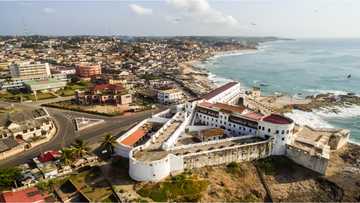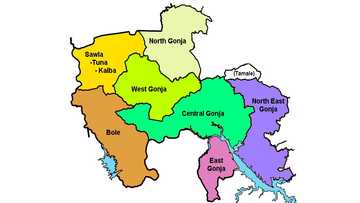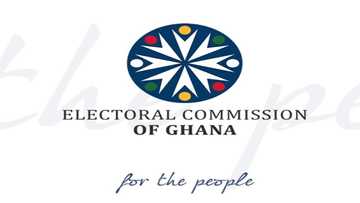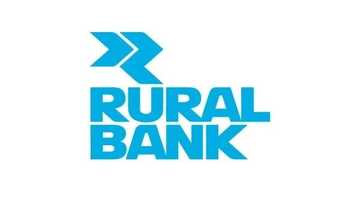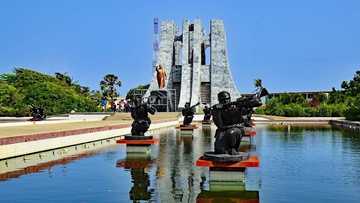List of all constituencies in Ghana
How well do you know Ghana? If you know your country that well, how much do you know about the different constituencies in Ghana? What are the different constituencies in Ghana and their members of parliament? The constituencies in Ghana are spread across the ten regions of the country each headed by a single member of parliament elected by the people. Initially, the number of constituencies in Ghana stood at 200. This number would increase in the year 2000 as 30 more seats were added. It would take another twelve years for the number of seats in the constituencies to be increased again. The total number of constituencies in Ghana now stands at 275. This brings the number of newly created constituencies in Ghana to approximately 45. Let us look at the list of constituencies in Ghana and the different regions in which they are located plus some little known facts about each region.
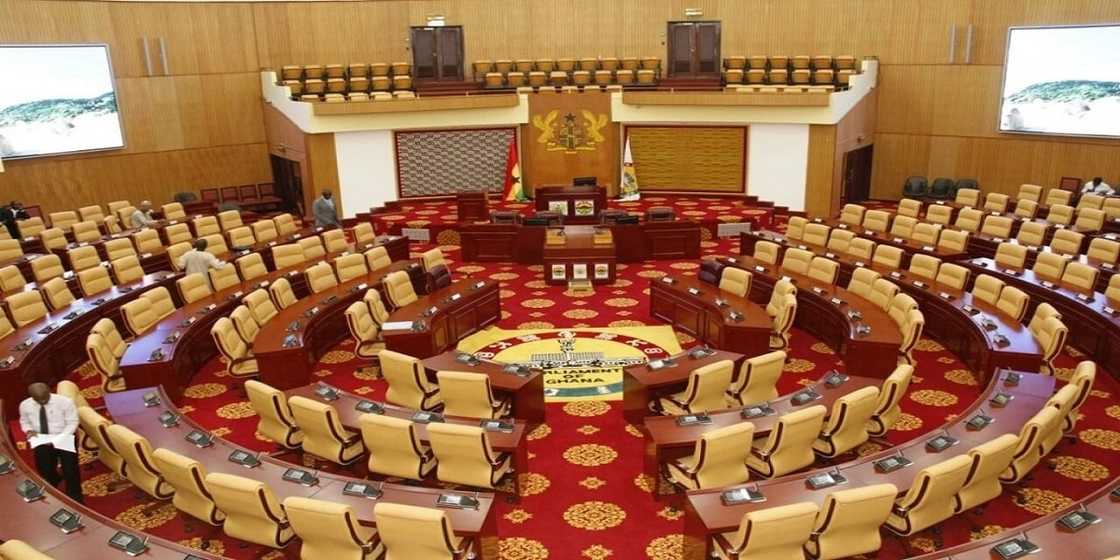
Do you know where all constituencies in Ghana are located? Here is breakdown of the constituencies in Ghana.
Regions and constituencies in Ghana
Now that we have answered the question on how many constituencies are in Ghana, we can now look at the regions that host the constituencies. Before we get into details about the region, let us first look at how the governance structure of the regions is like.
For every region, there are different numbers of districts. Then constituencies in Ghana are spread across the various districts with some having as many as 4 constituencies. The Regional Minister is the head of the region with regards to political matters. Being the political head of the region, the Regional Minister is head of the Regional Co-ordinating Council. The Regional Co-ordinating Council is comprised of different people from the constituencies including the District Chief Executives and Presiding members. Chiefs from the regions are also represented as they bring in representatives. There are also ex-officio members in the council who are the heads of department in the different regions.
There are also District Assemblies that are spearheaded by the District Chief Executive who are elected by the president. The Chief Executive has a District Co-ordinating Director acting as their assistants. The members of parliament in Ghana are elected by their various constituents to go represent them in the council.
1. Ashanti region

The Ashanti region is the biggest region in Ghana occupying a total area of 24,389 sq kilometres. It shares its boundaries with four regions namely; Brong-Ahafo which is to the north, Eastern region located in the east, Central region to the south and to the South west there is Western region. The region takes up almost more than 10% of the total land area in Ghana. The region has 25 districts that play host to the 47 constituencies in the region. The constituencies include;
- Adansi-Asokwa
- Fomena
- New Edubease
- Kwabre West
- Ahafo Ano North
- Ahafo Ano South
- Ahafo Ano South East
- Ahafo Ano South West
- Odotobori
- Aminsie West
- Manso Nkwanta
- Manso Edubia
- Asante-Akim North
- Asante-Akim Central
- Asante-Akim North
- Asante-Akim South
- Atwima-Mponua
- Atwima-Nwabiagya
- Atwima-Nwabiagya North
- Atwima-Nwabiagya South
- Bekwa
- Bosome-Ferho
- Bosomtwe
- Ejisu
- Juaben
- Ejura-Sekyedumase
- Asokwa
- Mampong
- Asokwa
- Bantama
- Nhyiaeso
- Oforikrom
- Old Tafo
- Suame
- Subin
- Manhyia Manhyia North
- Manhyia South
- Kwadaso
- Kwabre East
- Akrofuom
- Obuasi
- Obuasi East
- Obuasi West
- Ofinso North
- Ofinso South
- Kumawu
- Sekyere Afram plains
- Nsuta-Kwamang
- Afigya Sekyere West
- Afigya Sekyere East
- Effiduase-Asokore
All these constituencies are headed by members of parliament. There are also paramount chiefs who are the heads of all the traditional councils in the region. These councils are very important as they are used by the government to help mobilize the masses at the local level.
The region is also a cultural hub with very many festivals being celebrated there every year. There are however two major festivals, the Akwasidae and the AdaeKese festivals. These festivals are celebrated as a reminder of the previous heroes and leaders to have graced the communities.
2. Brong Ahafo Region
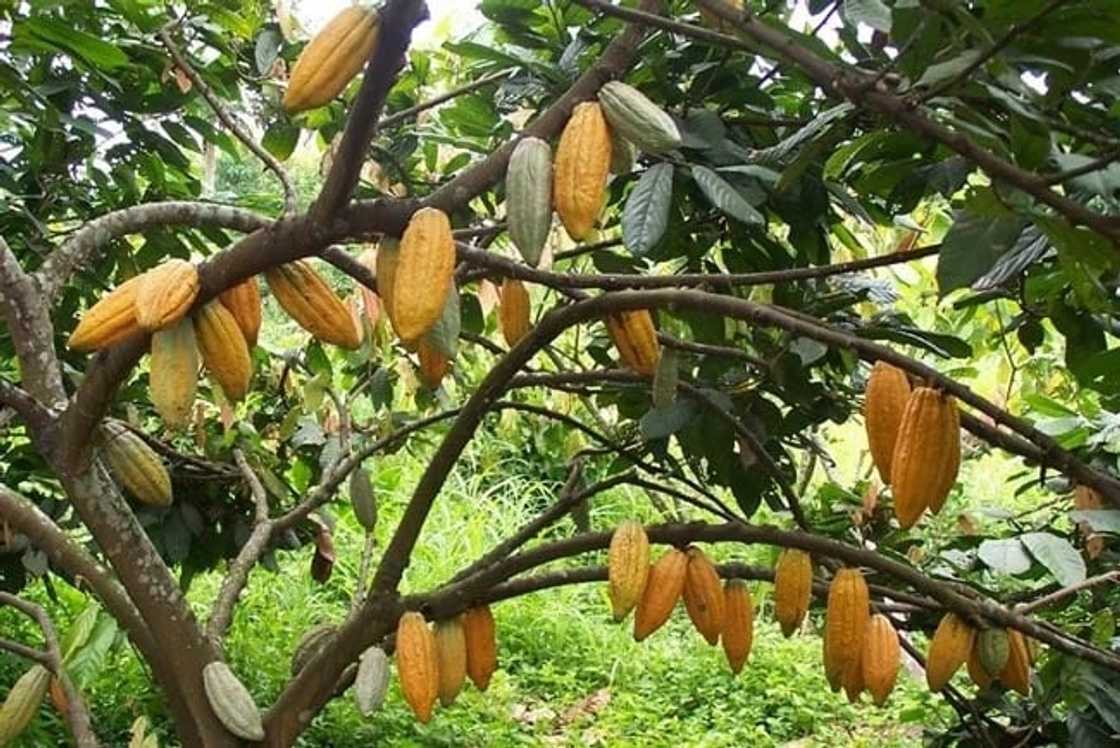
Source: UGC
What you might not have known is that the Brong Ahafo Region was once part of the Ashanti region until the year 1959. The region has 23 districts that play host to the 34 constituencies in the region. The constituencies are;
- Asunafo North
- Asunafo North
- Atebubu-Amantin
- Banda
- Berekum
- Berekum East
- Berekum West
- Dormaa East
- Dormaa West
- Dormaa West
- Dormaa Central
- Jaman North District
- Jaman North
- Jaman South
- Kintampo North
- Kintampo South
- Nkoranza North
- Nkoranza South
- Pru
- Pru East
- Pru West
- Sene
- Sene East
- Sene West
- Sunyani East
- Sunyani West
- Tain
- Banda
- Tano North
- Tano South
- Techiman North
- Techiman South
- Wenchi
The vast area of 39,557 sq kilometres lies in the forested areas of Ghana and for this reason it is the major producer of timber and cocoa in Ghana. The Guinea Savannah woodland which is located in the Northern part of the region is where the timber comes from. The Southern and the South Eastern parts of Brong Ahafo Region have the semi-deciduous forest where the cocoa plants grow. Other cash crops from the area are the cashew plants. Some of the tourist attractions in the region include caves, groves(Tanobose Sacred Grove), Digya National Park among others. The region is also famous for some spectacular rivers that also act tourist, attractions including the Pumpum River, Black Volta and River Oyoko. The communities in the region are highly protective of their sacred fish located in River Tano Pool. You can engage in different activities like rock climbing and hiking.
3. Central Region
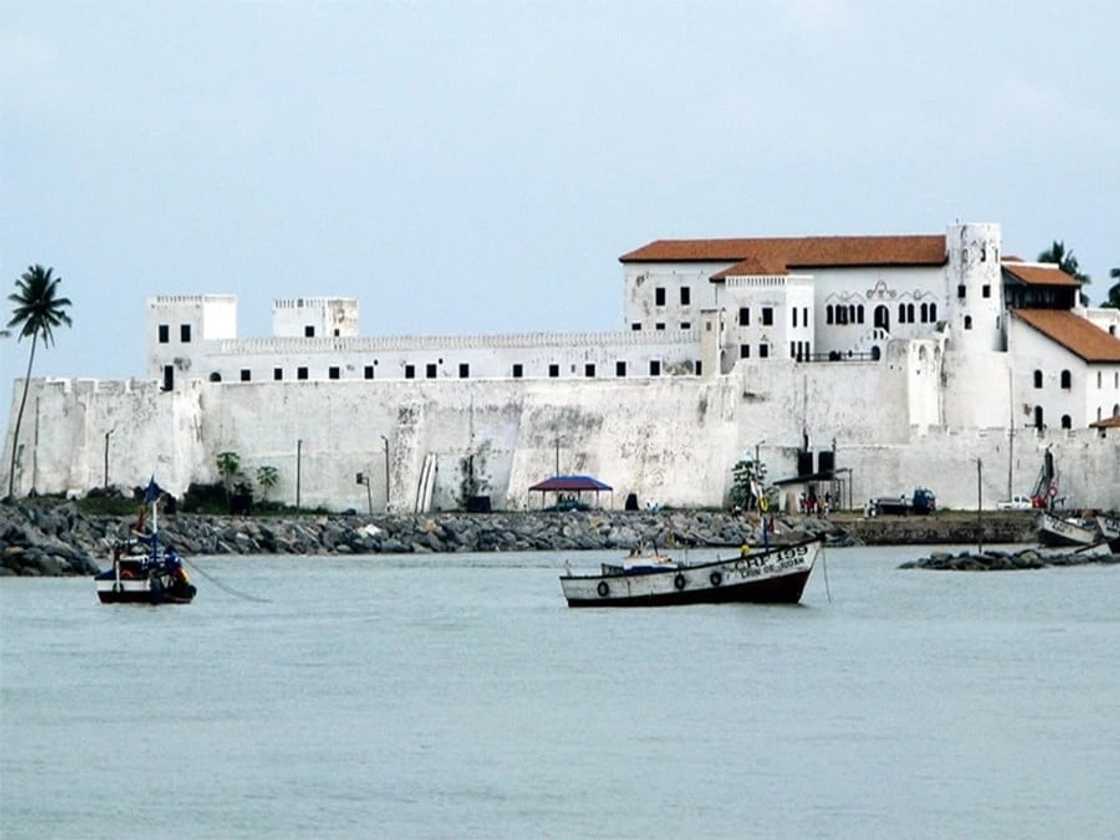
Before 1970, there was no Central Region. The region was part of the southern region until it was created in 1970 before the census that same year. The region has 17 districts that play host to the 26 constituencies in the region namely;
- Abura-Asebu-Kwamankese
- Agona East
- Agona West
- Ajumako-Enyan-Essiam
- Asikuma-Odoben-Brakwa
- Assin North
- Assin North
- Assin Central
- Assin South
- Awutu-Senya
- Awutu-Senya East
- Awutu-Senya West
- Cape Coast
- Cape Coast North
- Cape Coast South
- Effutu
- Gomoa East
- Gomoa Central
- Gomoa West
- Komenda-Edina-Eguafo-Abirem
- Mfantseman East
- Mfantseman West
- Hemang Lower Denkyira
- Twifo-Atii Morkwaa
- Upper Denkyira East
- Upper Denkyira West
The Central Region is fairly small as it occupies a total of 9,826 sq kilometres making it the third smallest region in Ghana. Do you know that the regions capital is cape coast? This must therefore mean that this region was the one that had the first contact with the outside world during the European exploration of Africa. The region is popular due to the large concentration of the natural resources. The most notable one is gold there are also deposits of bauxite, beryl, petroleum, natural gas, diamonds, clay and several others. However, the major economic activity in the region is fishing and the mining of salt that happens along the coast.
4. Eastern Region
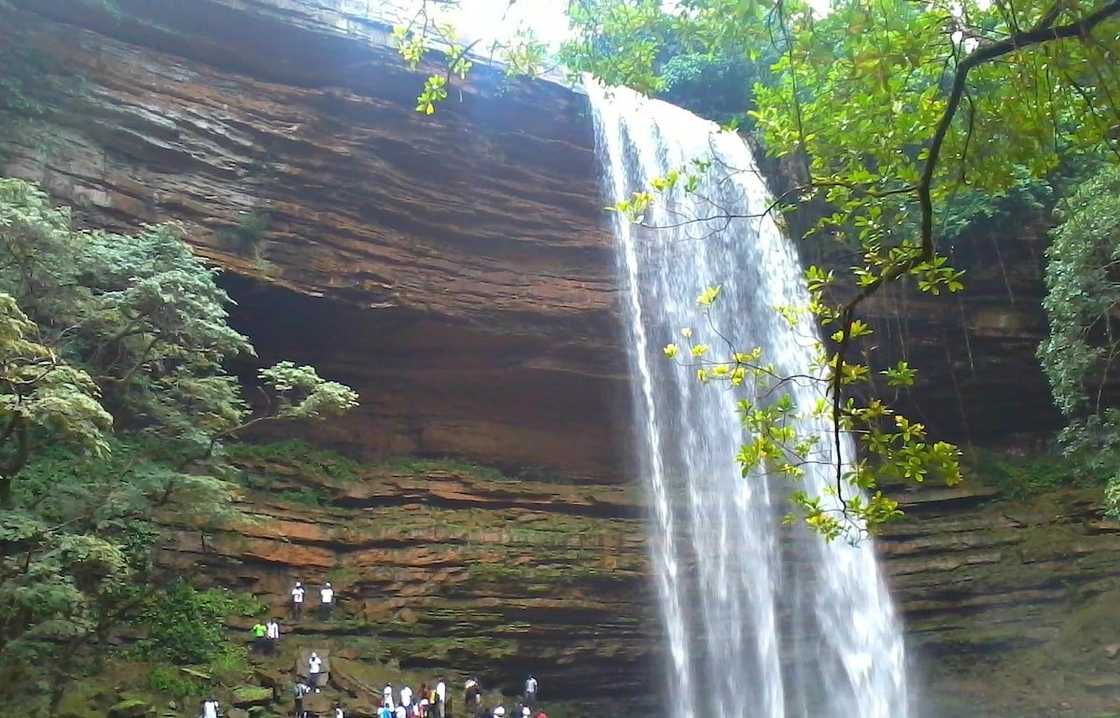
This region is quite vast as it covers 19,323 square kilometres which accounts for more than 8 % of Ghana's total area. The region has 21 districts that play host to the 37 constituencies in the region. The constituencies are;
- Akropong
- Akuapem North
- Okere
- Aburi-Nsawam
- Akwapim South
- Nsawam Adoagyiri
- Ofoase-Ayirebi
- Asuogyaman
- Atiwa
- Atiwa East
- Atiwa West
- Akim Oda
- Asene Akroso-Manso
- Abirem
- Akim Swedru
- Achiase
- Akim Abuakwa North
- Akim Abuakwa South
- Fanteakwa
- Fanteakwa North
- Fanteakwa South
- Akwatia
- Kade
- Abetifi
- Afram Plains North
- Afram Plains South
- Mpraeso
- Nkawkaw
- Lower Manya
- New Juaben North
- New Juaben South
- Ayensuano
- Suhum
- Upper Manya
- Lower West Akim
- Upper West Akim
- Yilo Krobo
The region is a religious hub as it consists of three major religions; Christianity(which has the largest following), Muslims and traditional religion. The region has a total of four ethnic groups namely; Akan, Ga-Dangme, Ewes and Guans. The Akan is the tribe with the largest population with Guans being the minority. There are several economic activities that are carried out in the region including agriculture, mining, retail as well as wholesale trade and forestry.
5. Greater Accra Region

The Greater Accra Region is the smallest of all the regions in Ghana. The region occupies a total of 3,245 square kilometres which is just slightly over 1% of the total area of Ghana. The region has a total of 10 districts with 37 constituencies that are headed by members of parliament. The constituencies are;
- Ablekuma Central
- Ablekuma North
- Ablekuma South
- Ablekuma West
- Ayawaso Central
- Ayawaso East
- Ayawaso East
- Ayawaso North
- Ayawaso West Wuogon
- Dade Kotopon
- Domeabra-Obom
- Korle Klottey
- Odododiodoo
- Okaikwei North
- Okaikwei Central
- Okaikwei South
- Adenta
- Ashaiman
- Ada
- Sege
- Ningo-Prampram
- Abokobi-Madina
- Dome-Kwabenya
- Trobu-Amasaman
- Trobu
- Amasaman
- Weija
- Weija-Gbawe
- Bortianor-Ngleshie-Amanfrom
- Anyaa-Sowutuom
- Krowor
- Ledzokuku
- Kpone-Katamanso
- Shai-Osudoku
- Tema East
- Tema Central
- Tema West
The region is relatively dry with high temperatures and low rains. However, there are months that rainfall does fall on the region. The region also has some minerals like salt, granite and bauxite. There are also rivers that flow through the region. The man rivers flowing through the region are the Volta River and the Densu River. There are also seasonal rivers that flow through the region that mostly emanate from the Akwapim Ridge. The two main religions in the region are Christianity and Islam.
READ ALSO: Major natural resources in Ghana
6. Northern Region
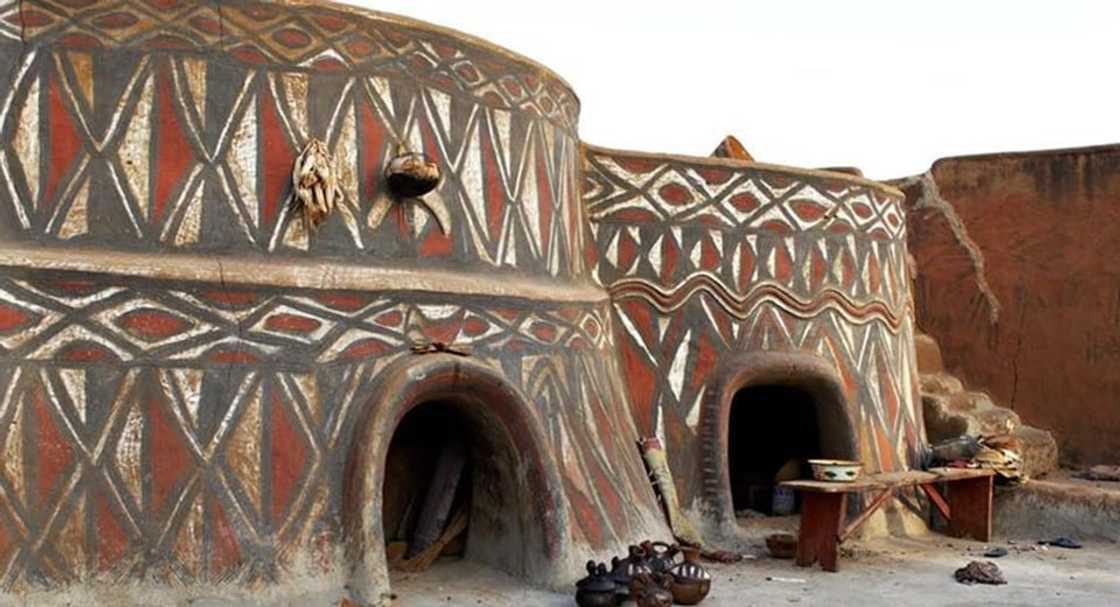
The Northern Region occupies an area of 70,383 square kilometres. This makes it the largest region in the in Ghana. In addition to sharing boundaries with four regions it also shares boundaries with with two other countries; Togo to the east and Cote d’ d'Ivoire to the west. The region is relatively dry with very little rainfall which comes for one season. The rainfall falls from the month of may to the month of October.
The region has couple of tourist attractions. One of the attractions is the Mole National Park. The park is located Damango in the West Gonja District. The park has an array of species including elephants, antelopes, apes, birds, the big buffaloes and many more. There are also sacred groves and shrines. The Malshegu and Jaagbo shrines are the most popular shrines situated just outside of Tamale. Another very popular and unique features of the region is the huts that are unique with colonial thatched roofs. There are also festivals celebrated across the region with the most important one being the Damba. While in the region, most people like to visit Larabanga where the unmovable stone that forced a road to be diverted lies. The region has 20 districts that play host to the 36 constituencies in the region. The constituencies are;
- Bole
- Bunkpurugu-Yunyoo
- Bunkpurugu
- Yunyoo
- Yapei-Kusawgu
- Chereponi
- Salaga
- Salaga North
- Salaga South
- Nalerigu
- Gushegu
- Karaga
- Kpandai
- Bimbilla
- Wulensi
- Saboba
- Nanton
- Savelugu
- Sawla-Tuna-Kalba
- Tamale Central
- Tamale North
- Tamale North
- Sagnarigu
- Tamale South
- Tolon
- Kumbungu
- Damango-Daboya
- Damango
- Daboya-Mankarigu
- Walewale
- Yagaba-Kubori
- Mion
- Yendi
- Zabzugu-Tatale
- Zabzugu
- Tatale-Sanguli
7. Upper East Region
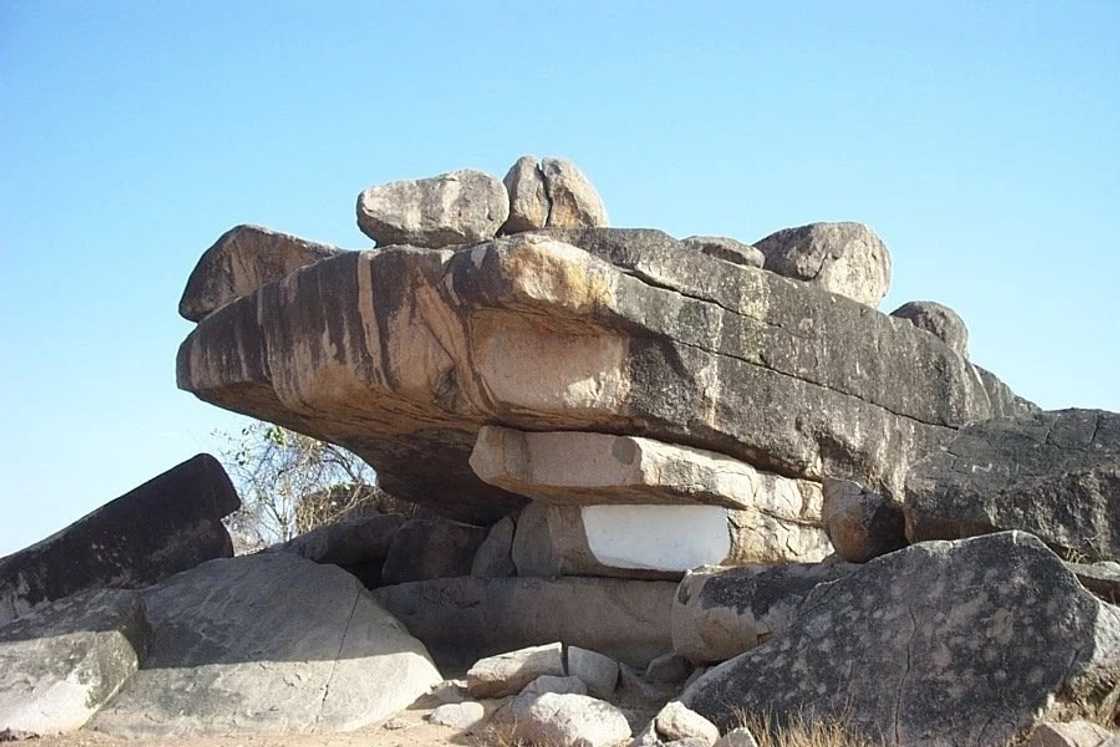
An interesting fact about the Upper East Region is the fact that it has the most people practicing traditional religion with 46% of the total population in Ghana practicing traditional religion coming from there. The Upper East Region was not in itself a region until 1983 when the government split what was then the “Upper Region” into two regions, the East and the West regions. The region has 9 districts that play host to the 17 constituencies in the region. The constituencies are;
- Bawku Central
- Binduri
- Pusiga
- Zebilla
- Bolgatanga
- Bolgatanga Central
- Bolgatanga East
- Bongo
- Builsa North
- Builsa South
- Garu-Tempane
- Garu
- Tempane
- Chiana-Paga
- Navrongo Central
- Nabdam
- Talensi
One of the best things about his region is that the education system in the region is quite good. There are more than 800 schools. The largest population lives in mud huts screwed with straw. The main economic activity in the region is hunting, forestry and not forgetting agriculture. You should also note that agriculture is the most practiced economic activities of the three mentioned. Cash crops grown are; millet, maize, onions , tomatoes and many more. The farms in the area are irrigated by two main irrigation schemes; Tono which is located in Navrongo and covers 2,490 hectares and the Vea irrigation scheme in Bolgatanga covering 850 hectares. There is also something for the tourists. There are several tourist sites in the region like the crocodile sanctuary in Paga or the Bolgatanga museum or you can visit the bomb site and see where Kwame Nkurumah escaped with his life after an attempt to kill him.
8. Upper West Region
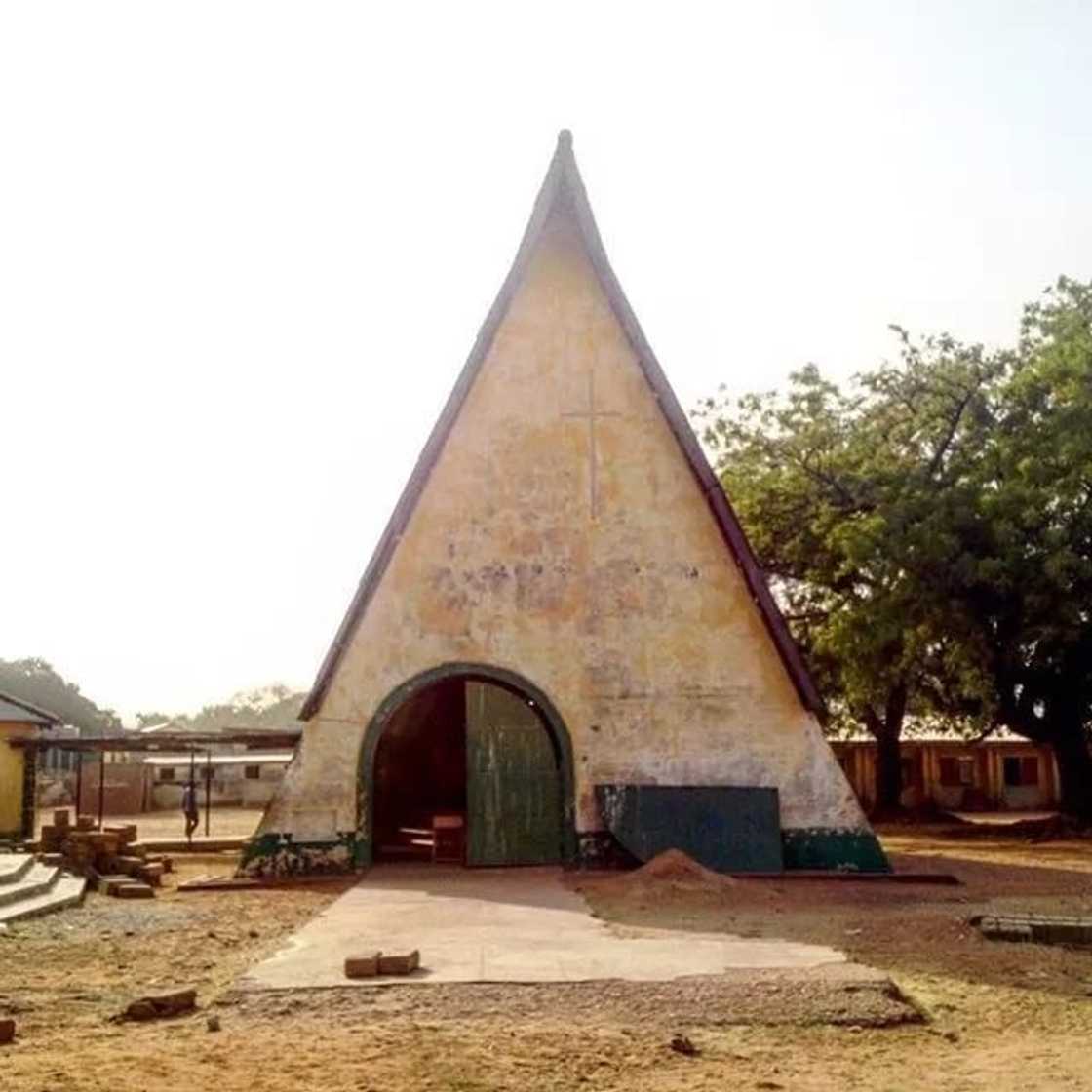
The Upper West is quite the size covering 18,476 square kilometres. The region has 9 districts that play host to the 12 constituencies in the region namely;
- Jirapa
- Lambussie
- Lawra-Nandom
- Lawra
- Nandom
- Nadowli East
- Nadowli West
- Sissala East
- Sissala West
- Wa East
- Wa Central
- Wa West
The region is boarded by two of Ghana's other two regions and two other African countries; Burkina Faso and Cote d’ivoire. It is located in the vegetation belt in the guinea Savannah. There are three major ethnic groups in the region; Dagaare, Wale, Lobi and Sissali with the majority of people being Christians. The people from the region are very cultural, from having regular religious and traditional festivals to embracing craftsmanship and coming up with spectacular handcraft pieces. There are some major tourist attractions in Wa, Larabanga and several other places including Wechaiu where you get to see the Nandom all-stone Gothic Art Church.
9. Volta Region
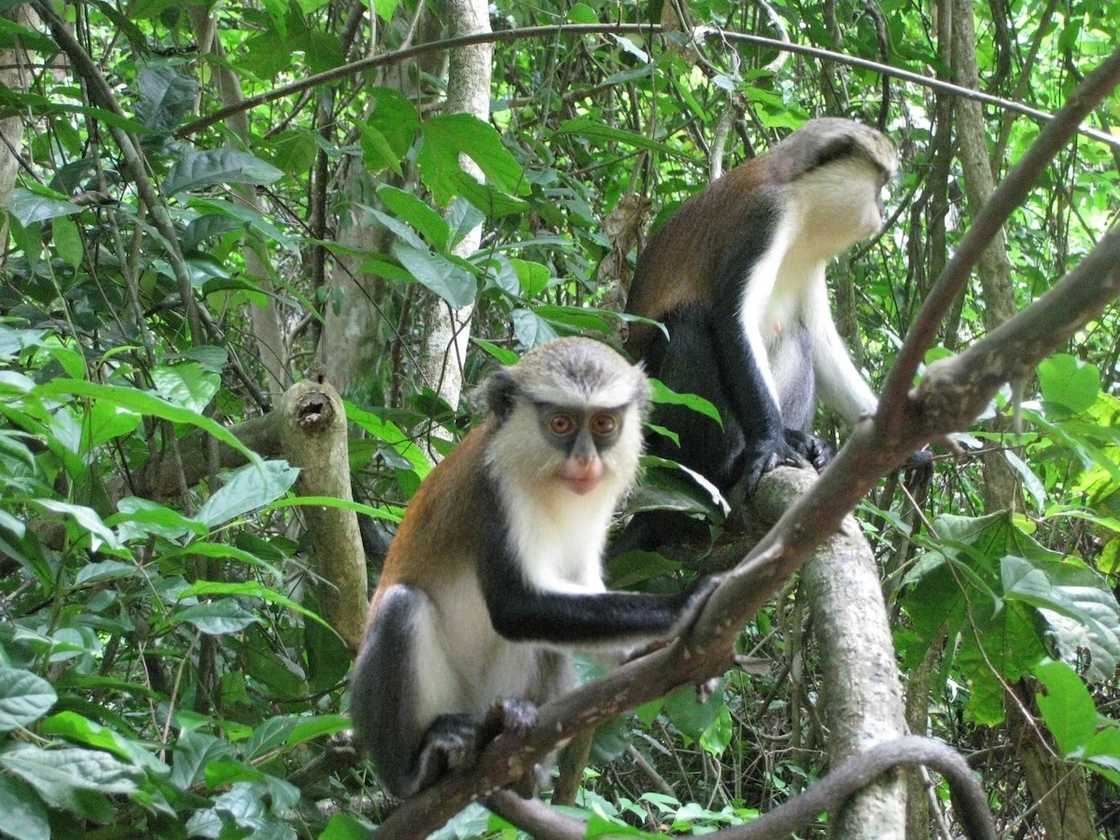
The Volta region is located on the border of Ghana and Togo. It shares its boundaries with three other regions in Ghana with an estimated area of about 20,570 square kilometres. That is about a total of 500 kilometers from north to south. The region has 23 districts that play host to the different constituencies in the region. The constituencies are;
- Adaklu
- Afadjato South
- Agotime-Ziope
- Akatsi North
- Akatsi South
- Biakoye
- Ho Central
- Ho West
- Hohoe South
- Buem
- Akan
- Anlo
- Keta
- Ketu North
- Ketu South
- Kpando
- Krachi East
- Krachi West
- Krachi Nchumuru
- Nkwanta North
- Nkwanta South
- Central Tongu
- North Tongu
- North Dayi
- South Dayi
- South Tongu
What makes this region unique is the fact that all the ethnic communities in Ghana are represented in the region. There are eight ethnic groups forming the majority of the people in the Volta. The people in the Volta predominantly practiced traditional religion. However, with the arrival of Christians most people found themselves converted. Now, over 67% of the total population practice Christianity. Most of the people in the region engage in agriculture with over one million hectares being considered proper for agricultural use in the region. The second largest economic activity is animal rearing with a large number of people preferring to keep domestic animals like cattle.
10. Western Region
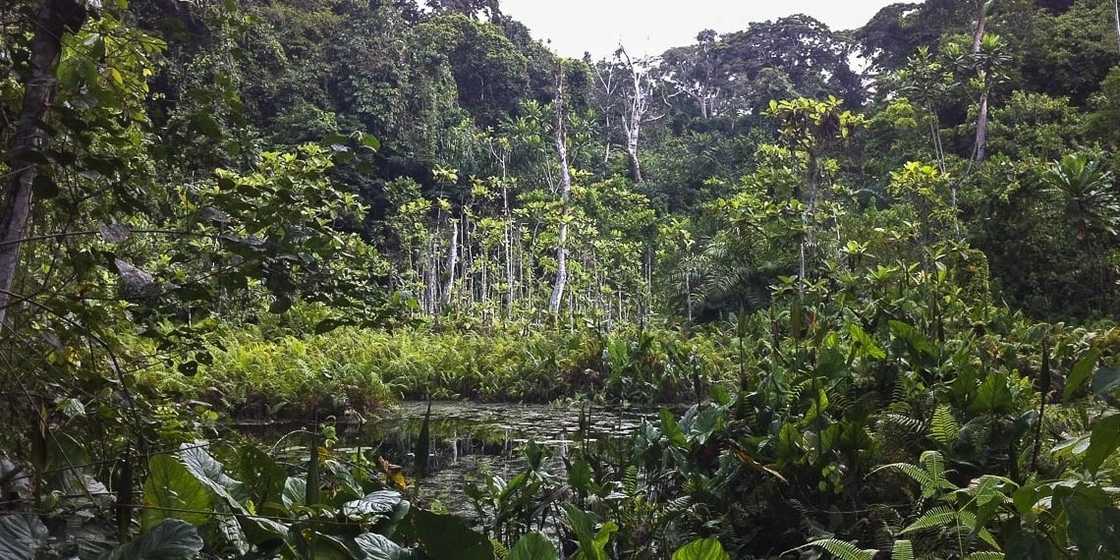
The Western region has 17 districts that play host to the 30 constituencies in the region. The constituencies are;
- Amenfi Central
- Amenfi East
- Ahanta West
- Aowin
- Suaman
- Bia
- Bia East
- Bia West
- Bibiani-Anhwiaso-Bekwai
- Ellembelle
- Jomoro
- Juabeso
- Bodi
- Mpohor-Wassa East
- Mpohor
- Wassa East
- Evalue-Gwira
- Prestea-Huni Valley
- Sefwi-Akontombra
- Sefwi Wiawso
- Effia-Kwesimintsim
- Effia
- Kwesimintsim
- Essikado-Ketan
- Sekondi
- Takoradi
- Shama
- Tarkwa-Nsuaem
- Amenfi East
- Amenfi West
This region covers an approximated area of about 2,391 square kilometres. This area is largely used for vegetation. The reason for this might be the fact that it is actually the wettest part of Ghana with over 1,600mm of rainfall every year. The region has a population rate of 3.2 with the population expected to be over 4 million in 2020. the region has five major ethnic groups ; the Ahntas, the Nzemas, the Sefwis, the Evalue and the Aowins. Majority of the people are Christians with Muslims having the second most followers in the region. When it comes to natural resources, the region s well endowed. It has a multitude of natural resources including rubber and the major producers of cocoa and palm oil. Due to the presence of the rich tropical forest, the region is one of the largest timber producing region in Ghana. You can find diamonds there as well as iron, bauxite, gold and manganese.
Now that you know the different regions that hold the different constituencies in Ghana you can now go ahead and look for an area that is attractive to you. Who knows, yo might end up loving the place and one thing might lead to another.
READ ALSO: The Biggest Region in Ghana
Source: YEN.com.gh

